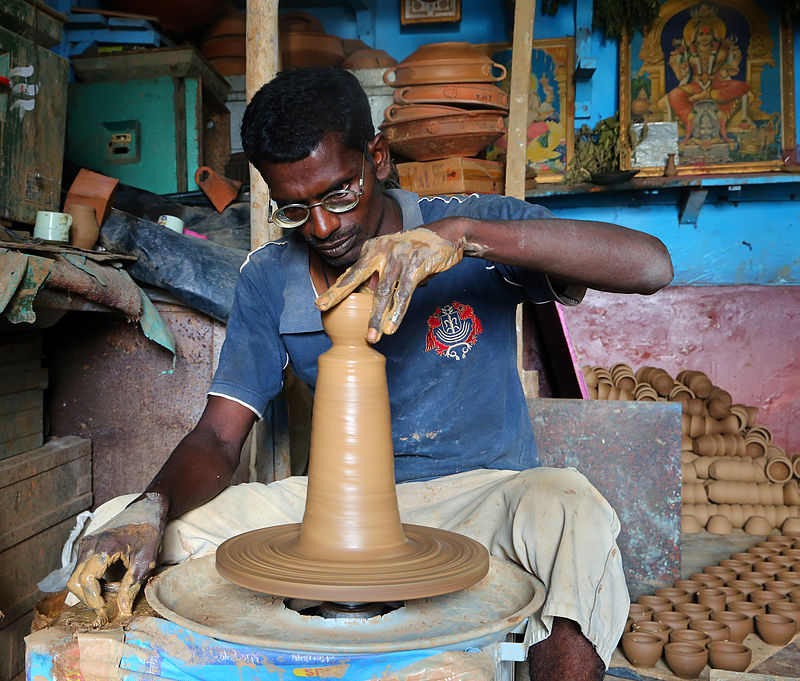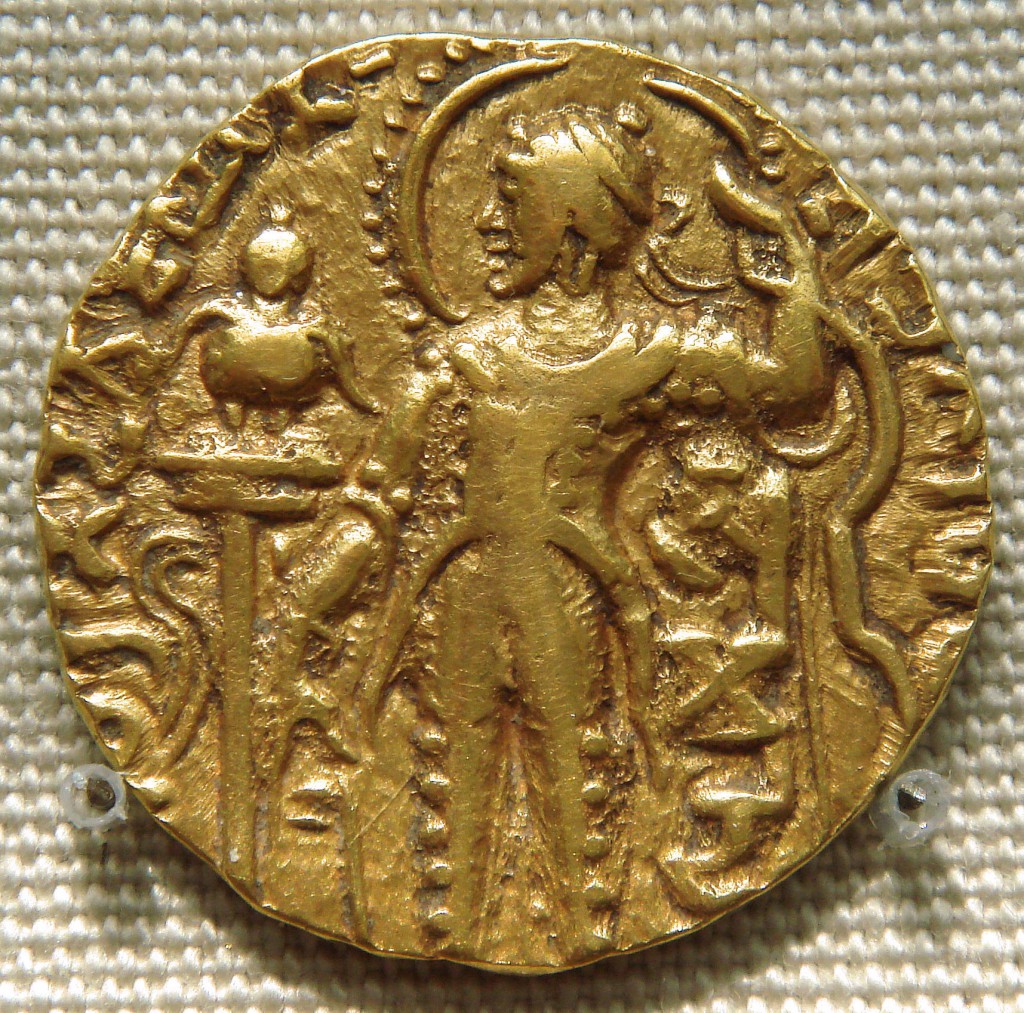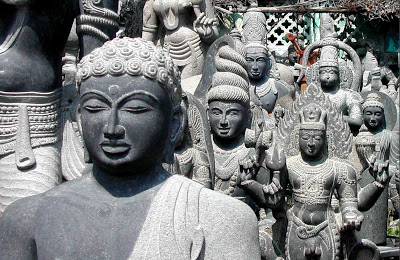
The Art of Sculpting
The art of sculpting is the handcraft of carving, molding, and shaping stone, clay, metal, marble or wood, besides other material, using various tools. In India, sculptures, jewelry and folk items have been sculpted since ancient times.
Origin & History
The most significant and ancient of these are the ones in clay, stone, marble and metal. The oldest sculptures are the stone and bronze ones from the Indus Valley Civilization. A well known example is the dancing girl in bronze from Mohenjo Daro & Harappa in present-day Pakistan.
During Ashoka’s reign from 270 to 232 BC, many famous sculptures of animals, especially lions, came up. Figurative sculpture now known as Gandharan sculptures made in wood were prominent in early Buddhist era. Buddha himself was not represented in human form, until 2nd Century BC. The famous lost wax bronzes of Chola Dynasty (c. 850-1250) from South India, included Shiva presented as ‘Nataraja’.
Also, once the Buddhists started with rock-cut caves, Hindus & Jains imitated them at Ellora, Elephanta, Mamallapuram & Aurangabad. Thus Indian art shared similar styles across the Indian land. Metal ‘casting’ emerged as a metal sculpting technique with its origins in Mesopotamia, or present day Iraq, in 3200C.
Tribal and folk art flourished through the centuries with pottery, painting, paper-art & metalwork. These artworks comprised much more than aesthetically appealing crafts, inspired from rituals & beliefs, fairs & festivals, local heroes. Weapons, masks & kitchen objects and other pieces were a part of the same. Presently, folk artistes are still into making artwork.
The Making
Metal sculptures in India are made using two procedures. In the first, a wax model of the deity is made and a clay mold is made on it. After the clay dries, it is heated and the wax inside melts. Molten metal is poured inside the clay mold. Once the metal is cooled and set, the clay mold is broken. The created image has to be polished and finished, as it is rough.
The second process starts with a clay mold in the form to be made. A coat of wax is applied on it which is then covered with a coat of fine clay on the top. Now, there is a layer of wax between the two layers of clay. Once the top layer of clay dries, the mold is heated to melt and in its place, molten metal is poured. The clay is then removed to reveal the metal sculpture.
Talking of marble next, the technique for sculpting it starts with selecting a marble block using claw or toothed chisels, mallets and calipers to measure the area and mark it with charcoal, pencil or chalk. Tools such as rasps (a flat steel tool with a coarse surface) and riflers are used to remove excess stones as small chips or dust. Especially mentionable in this context are those who supply the boulders or the roughly carved figures. The final process is that of polishing or buffing where emery (a stone harder than marble) is used to give the figure a polished and complete appearance.
Clay art, on the other hand, is done with the help of the potter’s wheel. Other techniques include granulate pressing, injection molding (suited to mass production for tableware), jiggering & jollying, roller-head machines, pressure casting, slip casting and RAM pressing. Most clay statues or objects are produced by molding them by hand or at the wheel and then firing them in an oven. A smoother finish can be given by rubbing and polishing the surface with wooden boards or stones while still wet.
Variety
The clay ‘Pat’ of Kalighat in Kolkata is an important art form. Pattachitra is the art of making these life-like clay plates with images of deities on them. Artisans from places like Midnapore had come initially in search of work to Kalighat, in Kolkata. They drew images of deities on clay plates used in worship and later on moved on to paper, wood cuts and even prints.
Sculpting has been done on different material throughout history. From bones, clay, wood to metal, stone & precious metals, a wide array of material is used for sculpting. Lime, boxwood, terracotta, ceramics, cast metals, and oak are materials which were used majorly for broader consumption, owing to their inexpensive nature. Then again, several sculpting techniques have been invented & discovered down the centuries, which include tempora, gilding, oil painting, enamel & sandblasting. Hardstone carving is a technique used to mold semi-precious stones. Casting is a process that goes into metal sculpting. Liquified metal is poured into a mold, in a hollow cavity of the required shape, and then allowed to cool down till it solidifies. Pottery comprises ceramic ware, earthenware & porcelain ware. It is made by molding an evenly kneaded clay body into a particular shape, and heated or ‘bisque fired’ in a ‘kiln’ to high temperatures. This absorbs the moisture content from the clay, thus giving it a definite form, making it ‘bone-dry’. Either hand-building or the potter’s wheel are two technique with which pottery is done.
Present Day Scenario
Metal sculptures are durable and have a beautiful finish in gold, silver, brass, bronze and more. Marble has the inherent ability to give a visual depth beyond its surface. It is also relatively soft, refined and easy to polish. It also has more grains which allow the sculptor to compose minute details. Uttar Pradesh, Tamil Nadu, Rajasthan, Bihar and West Bengal are some of the places that are known for stone and marble craft.
Jaipur is the center of marble carving in Rajasthan. Craftsmen, not only mold and sculpt figures of deities, but also make household items like bowls, trays, items for kneading dough etc. Ajmer, Udaipur, Jodhpur, Bikaner and Jaipur are main centers of jali (trellis) making, the geometric pattern sculpting on structures like Fatehpur Sikri.
Uttar Pradesh has many craft centers engaged in making different items from stone. The Raida community of Banaras is well known for making a range of marble items include tableware, plates, glasses bowls, food containers and candle holders. Agra is famous for its intricate marble inlay work, drawing inspiration from the Taj Mahal. Floral and geometric patterns dominate designs created here. Popular items include models of Taj, bowls, boxes, lamps, vases and pitchers. Intricately carved friezes, panels and trellis or jali work done in exquisite designs is a specialty of this place. Vrindavan and Mathura are popular for alabaster work. In many designs, alabaster items are studded with precious stones.
Gujarat is well known for marble sculptures of the Goddess Ambaji. Rural areas of Bihar are known for utensils made from black stone. Madhya Pradesh has a rich tradition of stone craft. Gwalior is known for jali (lattice) work. Animal and human figures are created in Jabalpur and Tikamgarh. The tribal region of Bastar is well known for sculptures of tribal gods and memorial pillars.
The art of Clay sculpting is prevalent in Rajasthan, West Bengal, Uttar Pradesh and some states of North-East India. These articles are usually available at a reputed store specializing in idols and other religious objects. They can also be ordered online.
Other articles that are needed for worship or as souvenirs are; replicas of the deities in stone, clay, marble, brass, bronze and alloys. Besides, candle holders, pedestals or ‘Chowkis’ that support the idols, plastic stickers of holy symbols and favorite gods and goddesses. Printed pictures with or without photo frames are sold in large numbers at sacred places. Prayer beads in various forms and materials like, glass beads, plastic beads, metal, Rudraksh beads and much more are a popular item. The oldest symbols such as the ‘Om’ and ‘Swastika’ are considered extremely holy and available in many designs and prices. Gold, silver and semi-precious or precious stones are used in the making of these symbols. These are also used in creating ornate crowns or tiaras for idols.
Innovations
Stone craft in India is not only restricted to ornate carvings on temples or sculptures of deities, but it is also used in making items like carved panels, tiles, paper weights, pen stands, models of historical buildings, sculptures of animals and humans etc. Articles used regularly for worship are now made with an array of materials and designs. Steel, Aluminum are used for making plates used for worship. Idols are being made with crystals, rhodium plating, titanium and other attractive materials.
Accessorizing
There is a great demand for necklaces, bracelets, pendants, earrings, charms and other accessories with religious symbols. Choker style, with cords or faux pearls pendants with idols of deities, are popular articles for gifting during festivals, weddings, housewarming and many such special occasions.
Maintenance
Different elements like brass, gold, silver, bronze and copper each have their own methods of upkeep. Marble has the disadvantage of absorbing skin oils upon being touched and developing a yellowish brown stain. Terracotta or clay has to be handled with care as it is not durable like metal. It cannot be soaked in water, merely wiped with a moist cloth.
References
Categories: Motifs & Embroideries


